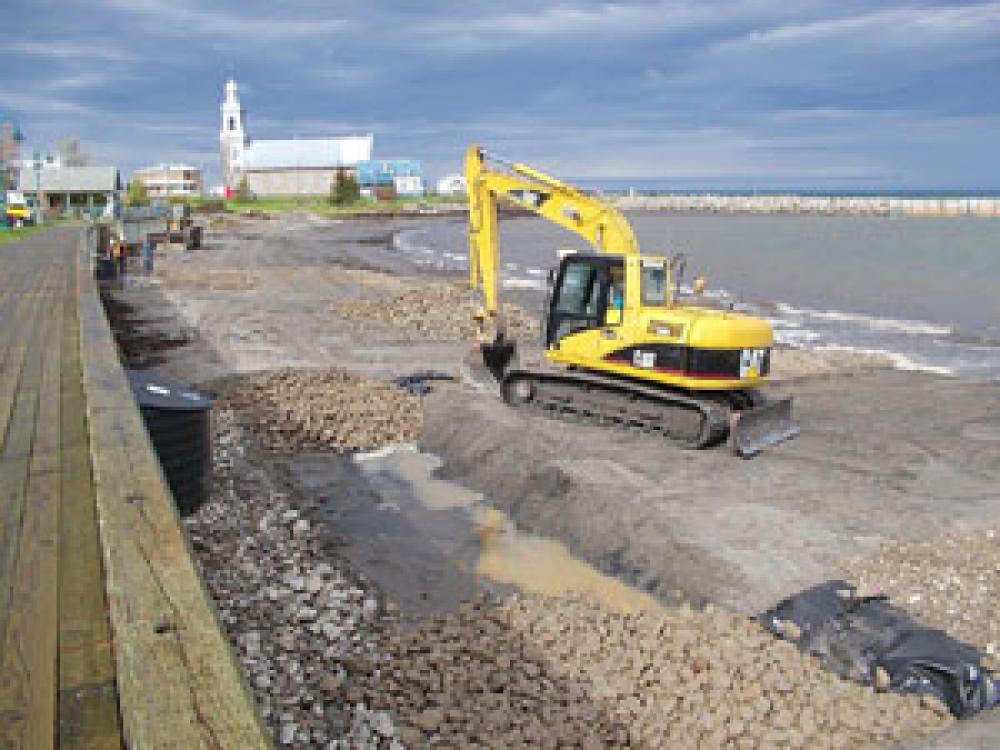
Feeding the Sea... to Combat Coastal Erosion
In recent years, shore erosion has become more significant in Quebec's maritime areas. In general, climate change has increased the rate of coastal erosion. Not only have sea levels risen, but the frequency of storms has increased, while ice cover, which usually protects the shores from winter attacks, tends to diminish.
The phenomenon of erosion is mainly due to the dissipation of wave energy on the coast. When waves strike the shore and return to the open sea, they destroy the bank and the fragile elements it is composed of (sand, pebbles, clay, gravel, etc.).
In the face of climate change and the growth of storms, it is impossible to resist such a powerful force of nature. The best strategy is therefore not to oppose the onslaught of the sea, but rather to adapt to it. Instead of building rigid concrete, steel or riprap shore structures, engineers have developed a strategy more suited to maritime erosion. This consists of periodically nourishing the shore with sediments collected elsewhere, whose purpose is to dissipate the energy of the waves without eroding the natural shore.
This technique, known as "beach nourishment", has already been implemented in several places in Quebec—specifically in the Magdalen Islands and Matane, and soon in Percé—and around the world. It offers very good results.
The added sediments are gradually "eaten away" by the sea, and when they disappear with the storms, the shore is nourished once more. The frequency and volume of nourishments depend on local conditions. These are analyzed by engineers using a numerical model of the observations and the measurements taken in situ and adapted to the actual behaviour of the shore.
Elisabeth Marceau
Small Craft Harbours

Ministère de la Sécurité publique

Ministère de la Sécurité publique





